Validity of Nutrient Intakes Derived from an Internet Website Dish-Based Dietary Record for Self-Management of Weight among Japanese Women
Abstract
:1. Introduction
2. Materials and Methods
2.1. Participants and Investigation Period
2.2. DR
2.3. WDDR
2.4. Nutrient Intake Analysis
2.5. Statistical Analysis
3. Results
3.1. Participant Attributes
3.2. Comparison and Correlation of the DR and WDDR
3.3. Agreement between the DR and the WDDR
3.4. Agreement between the DR and the WDDR by Bland–Altman Plot
4. Discussion
5. Limitations
6. Conclusions
Acknowledgments
Author Contributions
Conflicts of Interest
References
- Ministry of Health, Labour and Welfare of Japan. Vital Statistics in Japan Trends up to 2012. Available online: http://www.mhlw.go.jp/seisakunitsuite/bunya/kenkou_iryou/kenkou/kenkounippon21/en/eiyouchousa/ (accessed on 30 June 2017).
- Sakurai, T. Metabolic syndrome and impaired daily life function in the elderly. Jpn. J. Geriatr. 2013, 50, 182–186. [Google Scholar] [CrossRef]
- Carr, D.B.; Utzschneider, K.M.; Hull, R.L.; Kodama, K.; Retzlaff, B.M.; Brunzell, J.D.; Shofer, J.B.; Fish, B.E.; Knopp, R.H.; Kahn, S.E. Intra-abdominal fat is a major determinant of the National Cholesterol Education Program Adult Treatment Panel III criteria for the metabolic syndrome. Diabetes 2004, 53, 2087–2094. [Google Scholar] [CrossRef] [PubMed]
- Ministry of Health, Labour and Welfare of Japan. National Health and Nutrition Survey 2015. Available online: http://www.mhlw.go.jp/bunya/kenkou/kenkou_eiyou_chousa.html (accessed on 30 June 2017).
- Hartmann-Boyce, J.; Johns, D.J.; Jebb, S.A.; Summerbell, C.; Aveyard, P. Behavioural weight management programmes for adults assessed by trials conducted in everyday contexts: Systematic review and meta-analysis. Obes. Rev. 2014, 15, 920–932. [Google Scholar] [CrossRef] [PubMed] [Green Version]
- Neve, M.; Morgan, P.J.; Jones, P.R.; Collins, C.E. Effectiveness of web-based interventions in achieving weight loss and weight loss maintenance in overweight and obese adults: A systematic review with meta-analysis. Obes. Rev. 2010, 11, 306–321. [Google Scholar] [CrossRef] [PubMed]
- Arem, H.; Irwin, M. A review of web-based weight loss interventions in adults. Obes. Rev. 2011, 12, e236–e243. [Google Scholar] [CrossRef] [PubMed]
- Kibushi, M.; Takimoto, M.; Okoshi, Y.; Nakagawa, T.; Irokawa, M.; Yakura, N.; Tanaka, M.; Matsuda, S. Body weight reduction program for metabolic syndrome—Introduction of Internet-based HALSMA Diet Program. Asian Pac. J. Dis. Manag. 2008, 2, 119–122. [Google Scholar]
- Kastura, Y.; Ootsuki, S.; Nakada, H.; Doi, T.; Sakamoto, H.; Habuki, K.; Fujimoto, S. Efficacy of a hybrid health improvement program on the web for male workers with metabolic syndrome. Jpn. J. Clin. Sports Med. 2009, 17, 273–281. [Google Scholar]
- Asken. Available online: http://www.asken.jp/ (accessed on 30 June 2017).
- Asken diet. Available online: https://www.askendiet.com/ (accessed on 26 August 2017).
- Ministry of Health, Labour and Welfare of Japan. Dietary Reference Intakes for Japanese 2015; Daiichi Shuppan: Tokyo, Japan, 2015.
- Michie, M.; Kawabata, T. Changes in Dietary Habits in Obese Men and Women Continuously Using a Web-based Weight Loss Program. J. Jpn. Soc. Stud. Obes. 2013, 19, 118–124. [Google Scholar]
- Ministry of Education, Culture, Sports, Science and Technology of Japan. Standard Tables of Food Composition in Japan 2010. Available online: https://fooddb.mext.go.jp/ (accessed on 30 June 2017).
- Bland, J.M.; Altman, D.G. Statistical methods for assessing agreement between two methods of clinical measurement. Lancet 1986, 1, 307–310. [Google Scholar] [CrossRef]
- Viera, A.J.; Garrett, J.M. Understanding interobserver agreement: The kappa statistic. Fam. Med. 2005, 37, 360–363. [Google Scholar] [PubMed]
- Marshall, S.; Watson, J.; Burrows, T.; Guest, M.; Collins, C.E. The development and evaluation of the Australian child and adolescent recommended food score: A cross-sectional study. Nutr. J. 2012, 11, 96. [Google Scholar] [CrossRef] [PubMed]
- Dehghan, M.; Martinez, S.; Zhang, X.; Seron, P.; Lanas, F.; Islam, S.; Merchant, A.T. Relative validity of an FFQ to estimate daily food and nutrient intakes for Chilean adults. Public Health Nutr. 2013, 16, 1782–1788. [Google Scholar] [CrossRef] [PubMed]
- Kobayashi, S.; Murakami, K.; Sasaki, S.; Okubo, H.; Hirota, N.; Notsu, A.; Fukui, M.; Date, C. Comparison of relative validity of food group intakes estimated by comprehensive and brief-type self-administered diet history questionnaires against 16 d dietary records in Japanese adults. Public Health Nutr. 2011, 14, 1200–1211. [Google Scholar] [CrossRef] [PubMed]
- Keio SFC Data Analysis Education Group. An Introduction to Data Analysis, 7th ed.; Keio University Publishing Association: Tokyo, Japan, 2008. [Google Scholar]
- Kundel, H.L.; Polansky, M. Measurement of observer agreement. Radiology 2003, 228, 303–308. [Google Scholar] [CrossRef] [PubMed]
- Willett, W. Nutritional Epidemiology, 2nd ed.; Daiichi Shuppan: Osaka, Japan, 1996; pp. 46–146. [Google Scholar]
- Fallaize, R.; Forster, H.; Macready, A.L.; Walsh, M.C.; Mathers, J.C.; Brennan, L.; Gibney, E.R.; Gibney, M.J.; Lovegrove, J.A. Online dietary intake estimation: Reproducibility and validity of the Food4Me food frequency questionnaire against a 4-day weighed food record. J. Med. Internet Res. 2014, 16, e190. [Google Scholar] [CrossRef] [PubMed]
- Zhuang, M.; Yuan, Z.; Lin, L.; Hu, B.; Wang, X.; Yang, Y.; Chen, X.; Jin, L.; Lu, M.; Ye, W. Reproducibility and relative validity of a food frequency questionnaire developed for adults in Taizhou, China. PLoS ONE 2012, 7, e48341. [Google Scholar] [CrossRef] [PubMed]
- Hong, T.K.; Dibley, M.J.; Sibbritt, D. Validity and reliability of an FFQ for use with adolescents in Ho Chi Minh City, Vietnam. Public Health Nutr. 2010, 13, 368–375. [Google Scholar] [CrossRef] [PubMed]
- Kitou, K.; Ishihara, J.; Kimira, M.; Takachi, R.; Hosoi, S.; Ishii, Y.; Iwasaki, M. Applicability of the dietary record by cooked dishes method for estimating dietary intake of populations in the areas other than where the database was developed. Nihon Koshu Eisei Zasshi 2012, 59, 700–711. [Google Scholar]
- Preiss, D.; Fisher, J. A measure of confidence in Bland-Altman analysis for the interchangeability of two methods of measurement. J. Clin. Monit. Comput. 2008, 22, 257–259. [Google Scholar] [CrossRef] [PubMed]
- Kotake, Y.; Sato, N. Bland-Altman analysis for the accuracy evaluation of the cardiac output monitor. J. Jpn. Soc. Intensive Care Med. 2009, 16, 263–272. [Google Scholar] [CrossRef]
- Macedo-Ojeda, G.; Vizmanos-Lamotte, B.; Marquez-Sandoval, Y.F.; Rodriguez-Rocha, N.P.; Lopez-Uriarte, P.J.; Fernandez-Ballart, J.D. Validation of a semi-quantitative food frequency questionnaire to assess food groups and nutrient intake. Nutr. Hosp. 2013, 28, 2212–2220. [Google Scholar] [PubMed]
- Ishikawa-Takata, K.; Bessyo, K.; Tanaka, S.; Tabata, I. Accuracy of energy intake estimation by weighed dietary record among Japanese adults. Jpn. J. Nutr. Diet. 2011, 69, 57–66. [Google Scholar] [CrossRef]
- Silva-Jaramillo, K.M.; Neutzling, M.B.; Drehmer, M. FFQ for the adult population of the capital of Ecuador (FFQ-Quito): Development, reliability and validity. Public Health Nutr. 2015, 18, 2540–2549. [Google Scholar] [CrossRef] [PubMed]
- Adams, J.; Goffe, L.; Adamson, A.J.; Halligan, J.; O’Brien, N.; Purves, R.; White, M. Prevalence and socio-demographic correlates of cooking skills in UK adults: Cross-sectional analysis of data from the UK National Diet and Nutrition Survey. Int. J. Behav. Nutr. Phys. Act. 2015, 12, 99. [Google Scholar] [CrossRef] [PubMed]
- Takachi, R.; Kudo, Y.; Watanabe, S.; Kimira, M. Validity of smaller sample sizes for the dish-based component table to use with the self-reported “Dietary Record by Cooked Dishes”. Jpn. J. Nutr. Diet. 2006, 64, 97–105. [Google Scholar] [CrossRef]
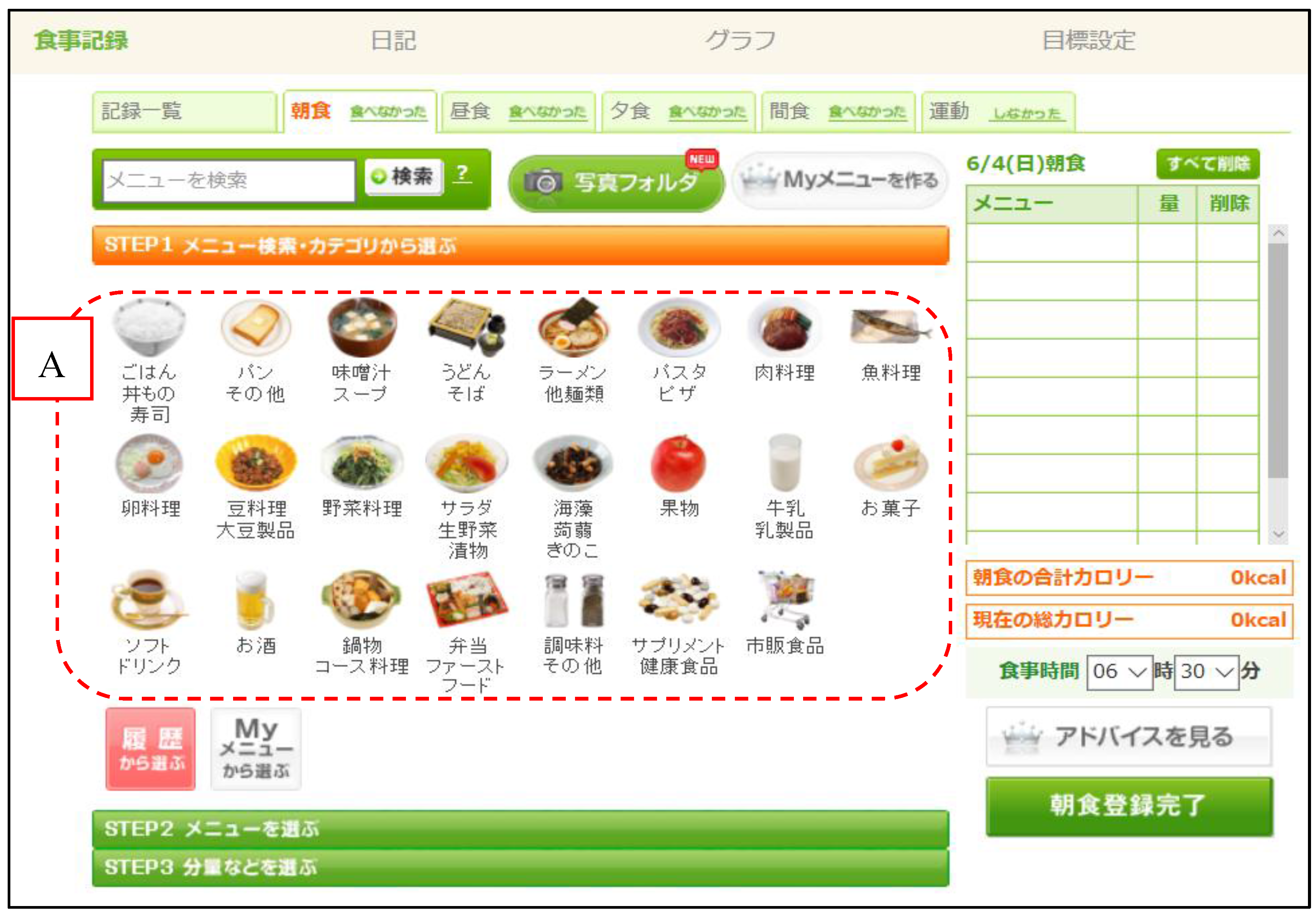
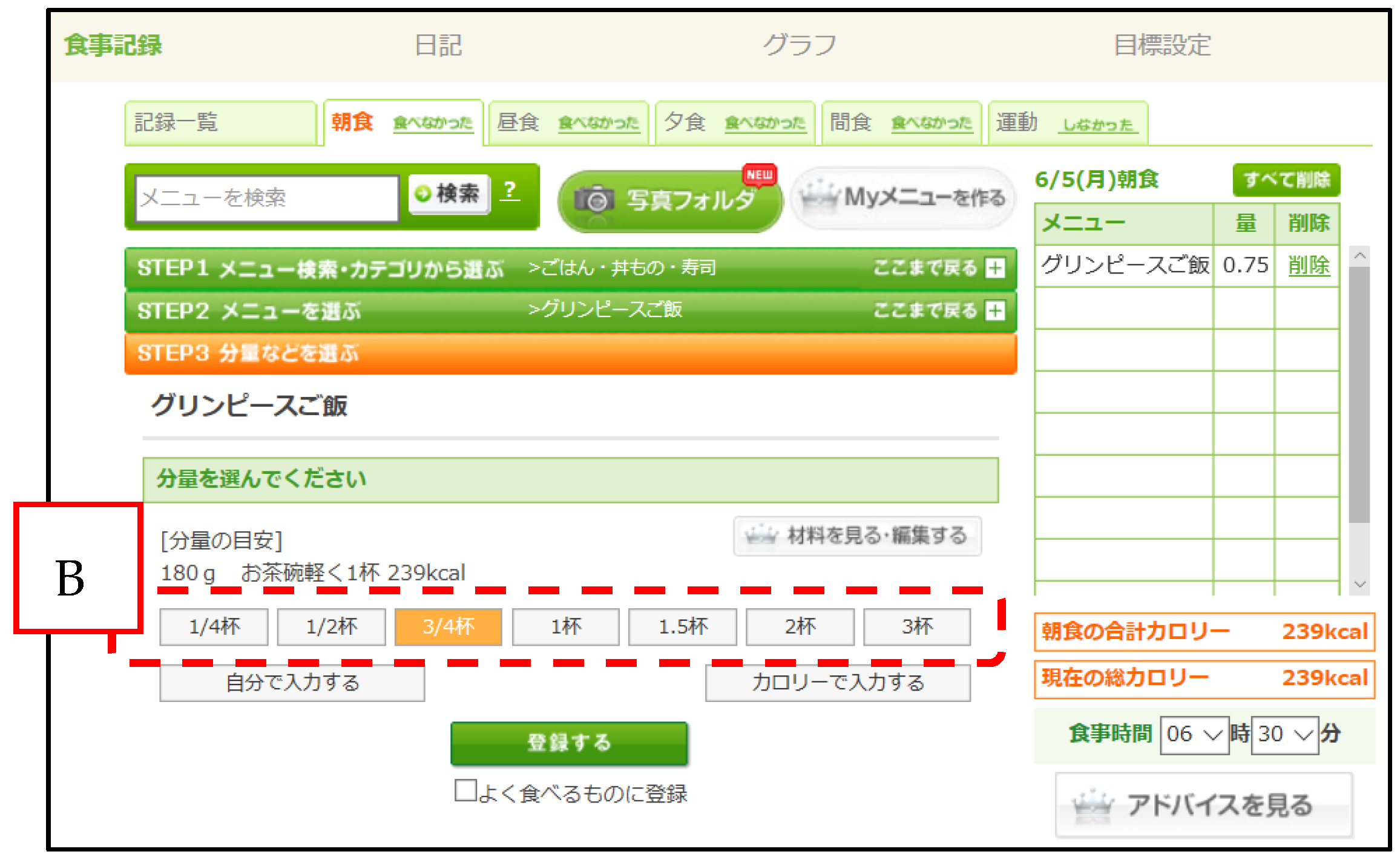
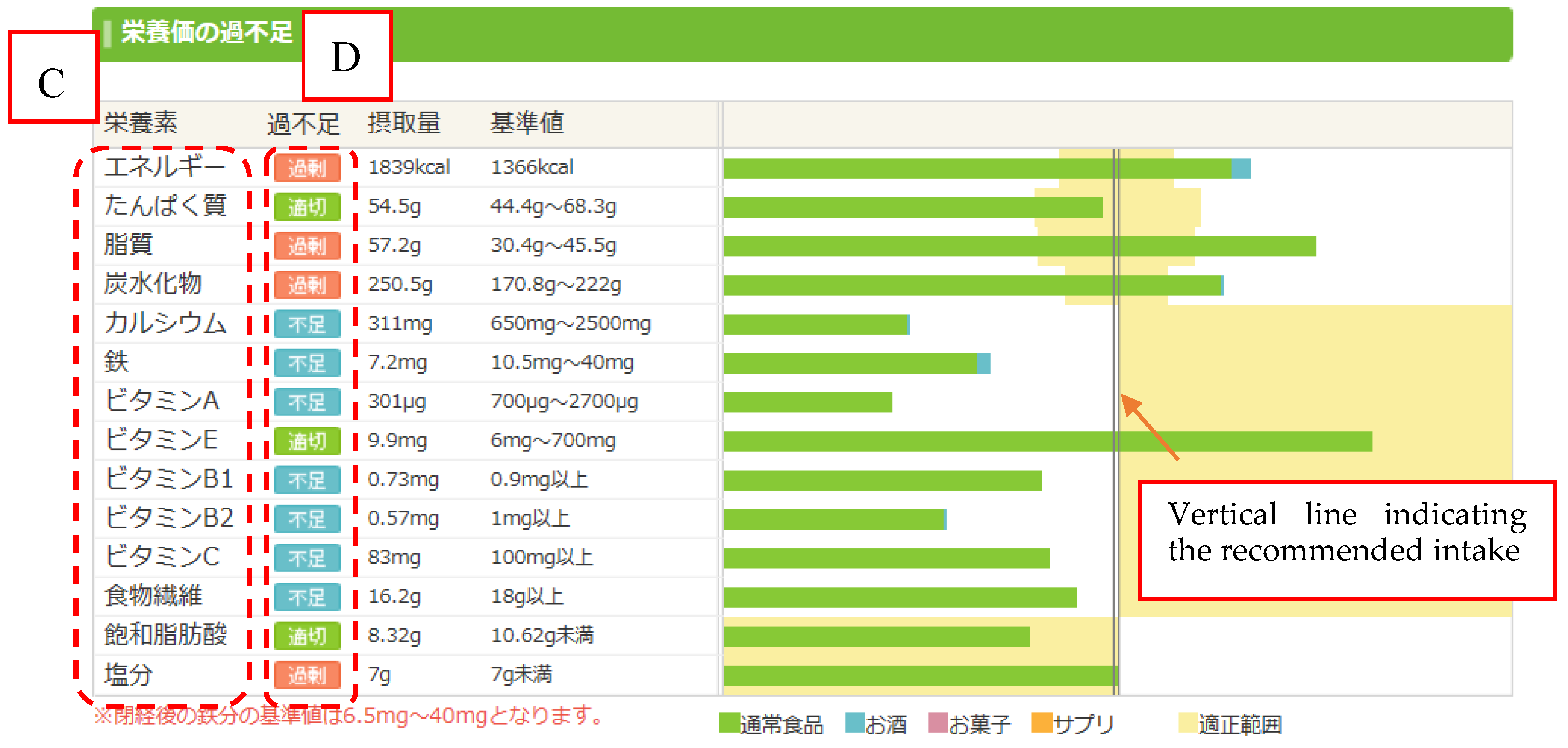
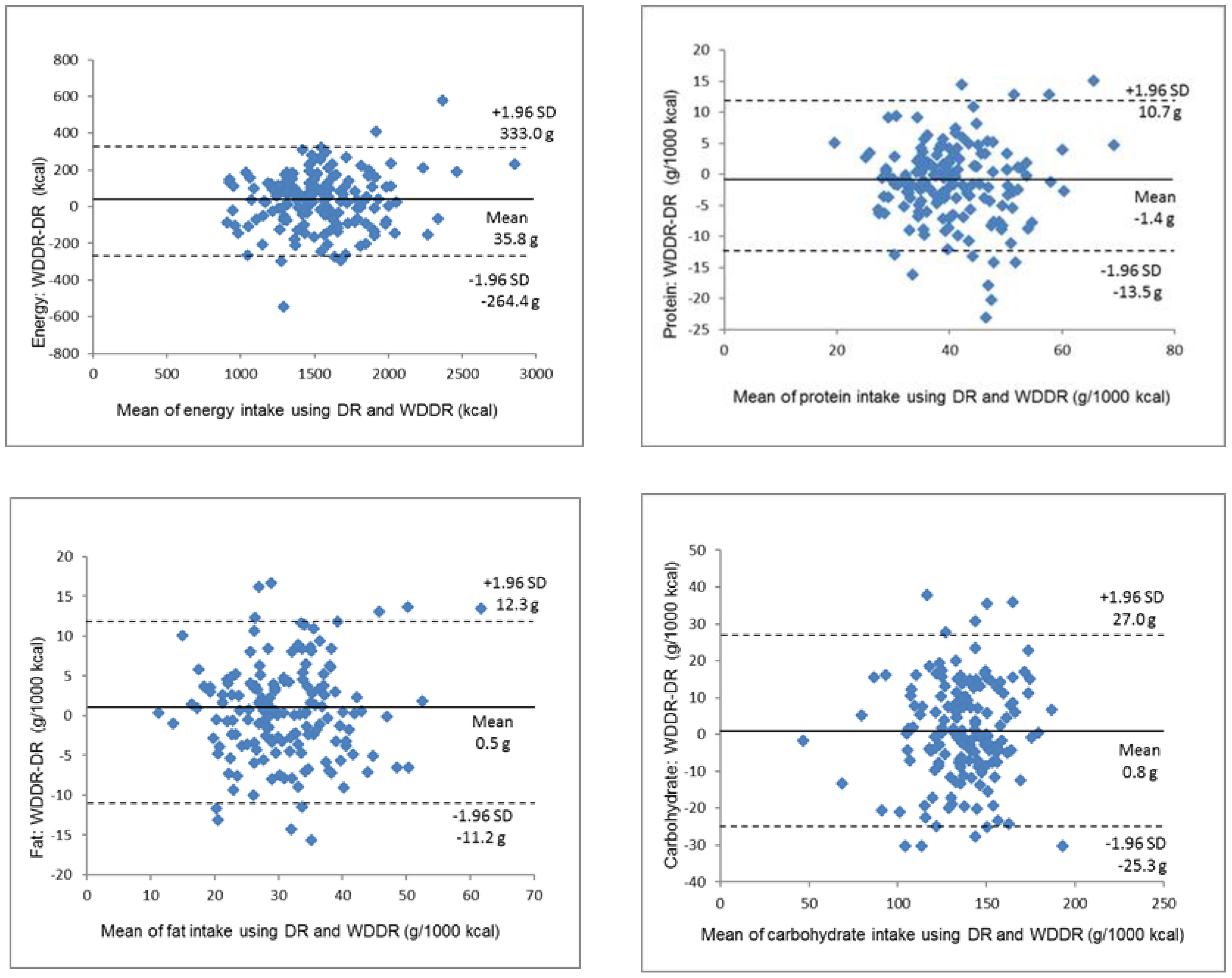

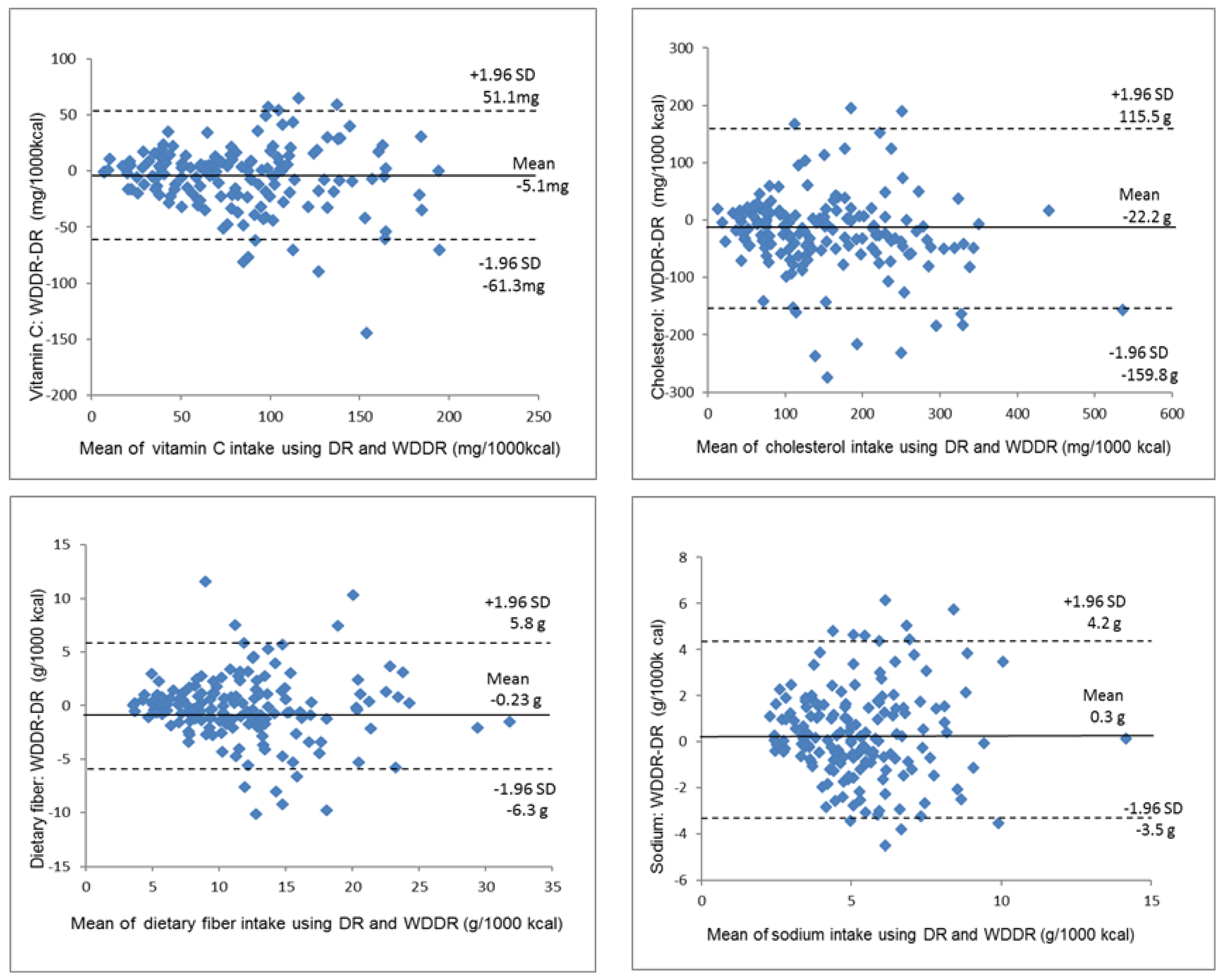
| Women (n = 163) | |||
|---|---|---|---|
| n (%) | Mean | SD 2 | |
| Age (years) | - | 39.3 | ±10.3 |
| Height (cm) | - | 158.4 | ±5.6 |
| Body mass index (kg/m2) | - | 22.3 | ±3.7 |
| Accustomed to using Asken | - | - | - |
| Yes | 94 (57.7) | - | - |
| No | 69 (42.3) | - | - |
| Physical activity | - | - | - |
| Inactive | 94 (57.7) | - | - |
| Moderate | 64 (39.3) | - | - |
| Active | 7 (4.3) | - | - |
| Employment status | - | - | - |
| Manager | 2 (1.2) | - | - |
| Employee | 40 (13.5) | - | - |
| Freelancer | 22 (18.4) | - | - |
| Part-timer | 30 (30.1) | - | - |
| Housewife | 49 (4.9) | - | - |
| Student | 8 (4.9) | - | - |
| Other | 12 (7.4) | - | - |
| DR | WDDR | Spearman’s Correlation Coefficient | ||||||
|---|---|---|---|---|---|---|---|---|
| Median 1 | Inter-Quartile Range | Median 1 | Inter-Quartile Range | Test 2 | r | r (Energy-Adjusted) | Evaluation | |
| Energy (kcal/day) | 1472 | 1307–1716 | 1554 | 1359–1732 | ** | 0.87 | — | Strong |
| Protein (g/day) | 61.6 | 50.0–72.0 | 61.3 | 49.9–69.2 | 0.78 | 0.75 | Strong | |
| Fat (g/day) | 45.9 | 34.8–55.5 | 45.7 | 36.6–60.1 | ** | 0.75 | 0.72 | Strong |
| Carbohydrates (g/day) | 208.1 | 173.4–236.3 | 215.6 | 187.6–245.2 | * | 0.82 | 0.79 | Strong |
| Calcium (mg/day) | 529 | 394–728 | 533 | 392–666 | 0.77 | 0.79 | Strong | |
| Iron (mg/day) | 8.2 | 6.4–10.7 | 8.2 | 6.3–10.3 | 0.81 | 0.84 | Strong | |
| Vitamin A (μg/day) | 498 | 305–797 | 571 | 349–917 | *** | 0.78 | 0.78 | Strong |
| Vitamin B1 (mg/day) | 0.92 | 0.67–1.22 | 0.92 | 0.68–1.15 | 0.76 | 0.77 | Strong | |
| Vitamin B2 (mg/day) | 1.13 | 0.92–1.41 | 1.17 | 0.91–1.36 | 0.71 | 0.75 | Strong | |
| Vitamin C (mg/day) | 124 | 85–163 | 117 | 77–155 | * | 0.81 | 0.82 | Strong |
| Vitamin E (mg/day) | 6.9 | 5.0–9.6 | 7.2 | 5.0–10.0 | 0.66 | 0.62 | Moderate | |
| Cholesterol (mg/day) | 222 | 123–351 | 193 | 111–310 | *** | 0.73 | 0.71 | Strong |
| Dietary fiber (g/day) | 16.6 | 12.0–21.7 | 16.4 | 12.0–21.5 | 0.79 | 0.81 | Strong | |
| Sodium (g/day) | 7.3 | 5.1–10.0 | 7.7 | 6.0–10.0 | * | 0.59 | 0.49 | Moderate |
| Quantile | Weighted Kappa Coefficient | |||||||
|---|---|---|---|---|---|---|---|---|
| Same Quantile (%) 1 | Adjacent Quantile (%) 1 | ±2 (%) | ±3 (%) | a + b (%) | Kw | LOA | Evaluation | |
| Energy | 66.3 | 30.7 | 3.1 | 0.0 | 96.9 | 0.70 | 0.63–0.78 | Good |
| Protein | 51.5 | 38.0 | 10.4 | 0.0 | 89.6 | 0.53 | 0.44–0.62 | Moderate |
| Fat | 51.5 | 38.0 | 9.2 | 1.2 | 89.6 | 0.52 | 0.43–0.61 | Moderate |
| Carbohydrates | 50.9 | 41.7 | 7.4 | 0.0 | 92.6 | 0.55 | 0.46–0.63 | Moderate |
| Calcium | 57.1 | 37.4 | 4.9 | 0.6 | 94.5 | 0.61 | 0.52–0.69 | Good |
| Iron | 58.9 | 36.8 | 4.3 | 0.0 | 95.7 | 0.64 | 0.56–0.72 | Good |
| Vitamin A | 54.6 | 39.3 | 4.9 | 1.2 | 93.9 | 0.58 | 0.49–0.66 | Moderate |
| Vitamin B1 | 49.1 | 42.9 | 8.0 | 0.0 | 92.0 | 0.53 | 0.44–0.61 | Moderate |
| Vitamin B2 | 55.2 | 34.4 | 10.4 | 0.0 | 89.6 | 0.56 | 0.47–0.65 | Moderate |
| Vitamin C | 58.3 | 36.2 | 4.9 | 0.6 | 94.5 | 0.62 | 0.53–0.7 | Good |
| Vitamin E | 54.6 | 31.9 | 11.0 | 2.5 | 86.5 | 0.51 | 0.41–0.61 | Moderate |
| Cholesterol | 54.6 | 36.8 | 7.4 | 1.2 | 91.4 | 0.56 | 0.47–0.65 | Moderate |
| Dietary fiber | 62.6 | 31.3 | 4.3 | 1.8 | 93.9 | 0.64 | 0.55–0.72 | Good |
| Sodium | 41.1 | 39.9 | 14.7 | 4.3 | 81.0 | 0.34 | 0.23–0.45 | Poor |
© 2017 by the authors. Licensee MDPI, Basel, Switzerland. This article is an open access article distributed under the terms and conditions of the Creative Commons Attribution (CC BY) license (http://creativecommons.org/licenses/by/4.0/).
Share and Cite
Matsuzaki, E.; Michie, M.; Kawabata, T. Validity of Nutrient Intakes Derived from an Internet Website Dish-Based Dietary Record for Self-Management of Weight among Japanese Women. Nutrients 2017, 9, 1058. https://doi.org/10.3390/nu9101058
Matsuzaki E, Michie M, Kawabata T. Validity of Nutrient Intakes Derived from an Internet Website Dish-Based Dietary Record for Self-Management of Weight among Japanese Women. Nutrients. 2017; 9(10):1058. https://doi.org/10.3390/nu9101058
Chicago/Turabian StyleMatsuzaki, Eri, Mikiko Michie, and Terue Kawabata. 2017. "Validity of Nutrient Intakes Derived from an Internet Website Dish-Based Dietary Record for Self-Management of Weight among Japanese Women" Nutrients 9, no. 10: 1058. https://doi.org/10.3390/nu9101058




